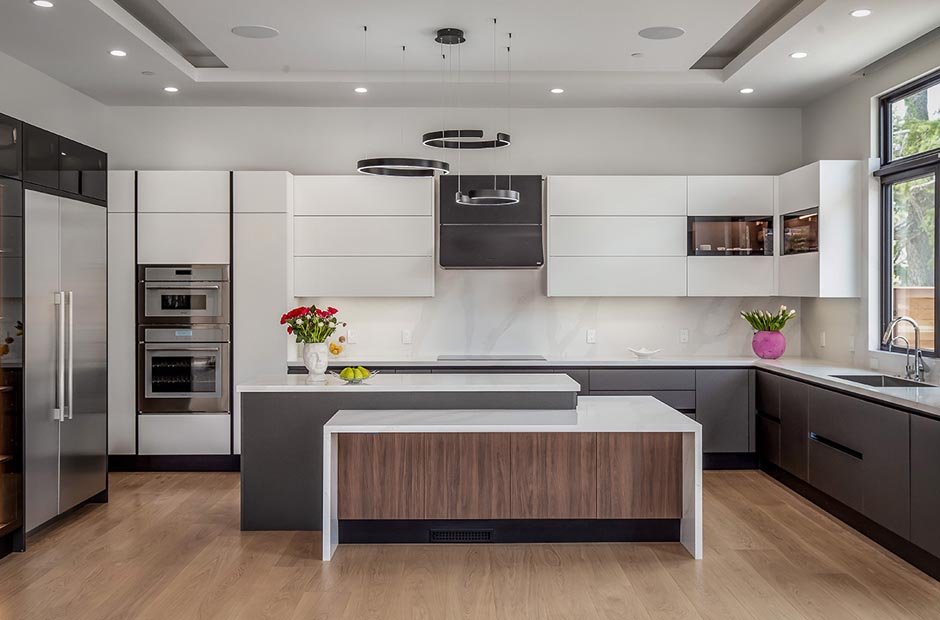In the nuanced world of cabinet design, the odyssey from an embryonic idea to a tangible masterpiece epitomizes a complex blend of art and engineering. This journey transcends the mere assembly of wood panels, evolving into a sophisticated symphony of creativity, precision, and technical skill. It involves a deep understanding of materials, an appreciation for the subtleties of form and function, and a commitment to excellence that infuses every stage of the process.
Central to this creative expedition is the craftsmanship exemplified by entities such as the Humble Construction of Salem, which stands as a beacon of meticulous artistry and aesthetic grace. Their work is not just about creating storage solutions but about forging pieces that resonate with the personal style and spatial dynamics of each client. This interplay between innovative design and traditional craftsmanship ensures that every cabinet is not just a piece of furniture, but a bespoke artifact that enhances the functionality and beauty of its intended space.
Unveiling the Blueprint: The Genesis of Cabinet Design
The journey begins in the abstract world of inspiration and conceptualization, where the seed of an idea germinates. Designers, akin to artists, draw upon a rich tapestry of influences, ranging from the nuanced demands of client lifestyles to the timeless allure of historical epochs. The essence of this inspiration is captured in preliminary sketches, where the vague contours of imagination start to assume a more definite form.
These initial drawings, replete with detailed specifications, serve as the nascent blueprint of the envisioned cabinet. They are the bedrock upon which the entire design process is anchored, guiding the transformation of ethereal thoughts into tangible structures. In this phase, the designer’s vision begins to merge with the practicalities of physical creation, setting the stage for the intricate dance between form and function that defines cabinet design.
Materializing the Vision: Selecting Materials and Techniques
Transitioning from design to actualization necessitates the careful selection of materials, a process pivotal to the cabinet’s aesthetic and structural integrity. This stage is characterized by a meticulous evaluation of wood species and materials, each selected for their distinct grain patterns, coloration, and inherent strength. The selection is not merely aesthetic but is also informed by the material’s durability and performance under various conditions. Craftsmanship techniques are chosen with equal care, embodying the legacy of precision and durability that marks the work of establishments like the Humble
Construction of Salem. Techniques such as dovetail joinery, known for its strength and beauty, or mortise-and-tenon joints, celebrated for their robustness, are deliberated to enhance the cabinet’s longevity and aesthetic appeal. This deliberate and thoughtful selection process underscores the craftsmanship that goes into each piece, ensuring that the final product is not only beautiful but built to last.
Engineering Precision: Technical Aspects of Cabinet Design
The technical design phase is where the abstract vision begins to confront the realities of physics and material science. Here, designers engage with the minutiae of structural integrity and functional design, ensuring that the cabinet can withstand the rigors of use while fulfilling its intended purpose. This involves intricate planning of dimensions, weight distribution, and ergonomic considerations, ensuring that the piece is not only a visual delight but also a paragon of functionality.
Modern hardware choices and storage solutions are integrated, showcasing a blend of tradition and innovation typical of the Humble Construction of Salem’s approach. This phase exemplifies the technical acumen of the designers, as they create pieces that are both practical and aesthetically pleasing, ensuring that the cabinet will serve its intended function with grace and efficiency.
Aesthetic Harmony: Balancing Form and Function
Cabinet design is an art form where aesthetic harmony plays a crucial role, bridging the gap between the functional and the beautiful. Designers must navigate the intricate balance of integrating current trends with timeless design principles, ensuring that the cabinet not only serves a practical purpose but also enhances the space’s overall aesthetic.
This balance of form and function is achieved through a nuanced understanding of design elements, allowing for a piece that reflects the client’s personality while fitting seamlessly into the broader narrative of their living space. Customization and personal touches become the hallmark of this phase, as designers infuse each cabinet with unique elements that echo the individuality of the owner, making each piece a bespoke testament to the skill and creativity of its creators.
The Final Assembly: From Workshop to Installation
The culmination of the cabinet design process is the assembly and installation of the finished piece. This stage is a testament to the craftsmanship and attention to detail that goes into each step of the process. From the initial cutting of materials to the final finishing touches, each action is performed with a commitment to excellence.
The installation of the cabinet is a critical phase where the crafted piece is integrated into its designated space, a process that often presents unique challenges and requires the skilled hand of experienced craftsmen. This final step in the cabinet’s journey from concept to creation is a delicate balance of technical skill and artistic sensibility, ensuring that the piece not only fits the space physically but also complements its style and function, embodying the vision and expertise of the designers and craftsmen involved.
In weaving together these intricate threads, the process of cabinet design mastery emerges as a multifaceted journey that blends inspiration, technical skill, and artistic execution. It’s a process that transforms raw materials and visionary concepts into functional and aesthetic pieces, enhancing the living spaces they inhabit. The expertise and dedication of craftsmen, exemplified by the Humble








